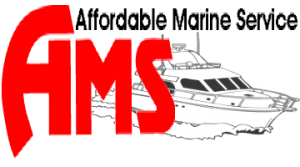How To Operate A VHF Radio

A VHF radio could save your boat, and save your life, as well as the lives of your passengers – but only if you know how to use it properly.
If there’s an emergency on your boat, your most reliable lifeline to the outside world is the VHF radio. Communications are instant, and as long as you’re within range and have battery power, few variables can interfere with the connection.
And thanks to modern DSC radios and GPS, the Coast Guard will know your exact location the moment you press the distress button. This assumes, of course, that you know which buttons to push, what to say, and when to say it.
If you’re not 100-percent clear on this process, then use this VHF radio tutorial as a guide.
Here are the basics for making a call:
1. Turn on the power, and adjust the squelch. Squelch eliminates static; simply turn it up until you hear steady static, then back it off until the static cuts out. Stop turning it down immediately after the static is eliminated, or you won’t hear other people’s transmissions.
2. Tune the radio to the channel you want, key the mic and speak clearly, with the mic held at a 90-degree angle to your chin. Don’t smash it up against your mouth or the transmission will be garbled.
3. For general recreational conversation, use the “open” channels: 68, 69, 71, and 72. A complete listing of all VHF channels and their uses can be found here.
Here are the basics on making an emergency call:
1. Tune your radio to channel 16, which is constantly monitored by the USCG.
2. If the lives of you or your passengers are in immediate danger, use the call sign “mayday” If you’re in a situation which is bad but not yet life-threatening, but could deteriorate, use the call sign “pan-pan”.
3. Say the appropriate call sign clearly three times, followed by the name of your vessel. (As an example, “Mayday, mayday, mayday, this is the Reel Fun…”)
4. When the Coast Guard answers, be ready to tell them the nature of your emergency, the number and ages of people onboard, and if your radio doesn’t have active DSC, your exact location (in latitude and longitude from GPS, if at all possible).
Here are the basics for making a radio check:
1. First off, never perform a radio check on channel 16. Use an open channel, or channel 9.
2. Use the call sign “radio check.” Repeat three times as you would for an emergency call, then state your vessel’s name and location. (As an example, “Radio check, radio check, radio check, this is the Reel Fun in San Diego Bay…”)
3. Remember that you may be able to make an automated radio check call. Sea Tow maintains an automated service in many areas of the nation, on channel 24, 26, 27, or 28 (depending on your location; check their web site to find out which channel is used in your area).
In this case, just say “radio check” and if your call is received, the service will play it back so you can hear how well your transmission went through.
Here are a few other key VHF concerns you need to be familiar with:
Range: VHF is line-of-sight, so range depends on how tall your antenna is, and how tall the receiving antenna is. On an average 20-something powerboat with an eight-foot antenna, you can plan on 15 to 20 miles of range.
When calling the Coast Guard this range can be dramatically expanded, since they have extremely tall antennae at their stations. In fact, at times you may be able to reach one of their land-based stations from 50 or 60 miles away.
Power: This is a non-issue with VHFs, since all fixed-mount units are limited to 25 watts by the FCC. Handheld units usually have between one and six watts, but regardless of power range is likely going to be limited to a mile or two since handheld antenna are so close to the water.
Note that your fixed-mount unit probably has a one-watt setting, which should be used when talking with nearby boats so you don’t “step on” (transmit over) the communications between other boats that are far away.
DSC: All modern VHFs have Digital Select Calling, which will tell the USCG your latitude and longitude (as well as the boat’s size and name, and other general information) as soon as you transmit a mayday. But it only works if your VHF has an internal GPS or your GPS/chartplotter is interfaced with the radio. Make sure this is the case before you leave the dock.
Article courtesy of Lenny Rudow
We hope this Article assisted you in your ability to remain calm in the face of possible "on the water" problems, helping to insure many a successful boating adventure.
If you have any questions or concerns, please be sure to contact the team here at Affordable Marine Service.
We are committed to providing you with the utmost in professional boat service and repair. Click on the Affordable Marine Service logo below and schedule an appointment today!

